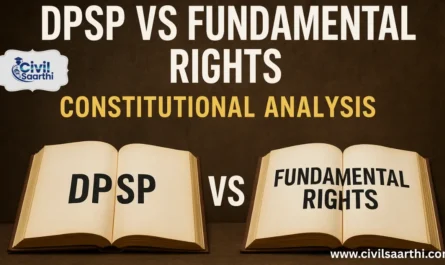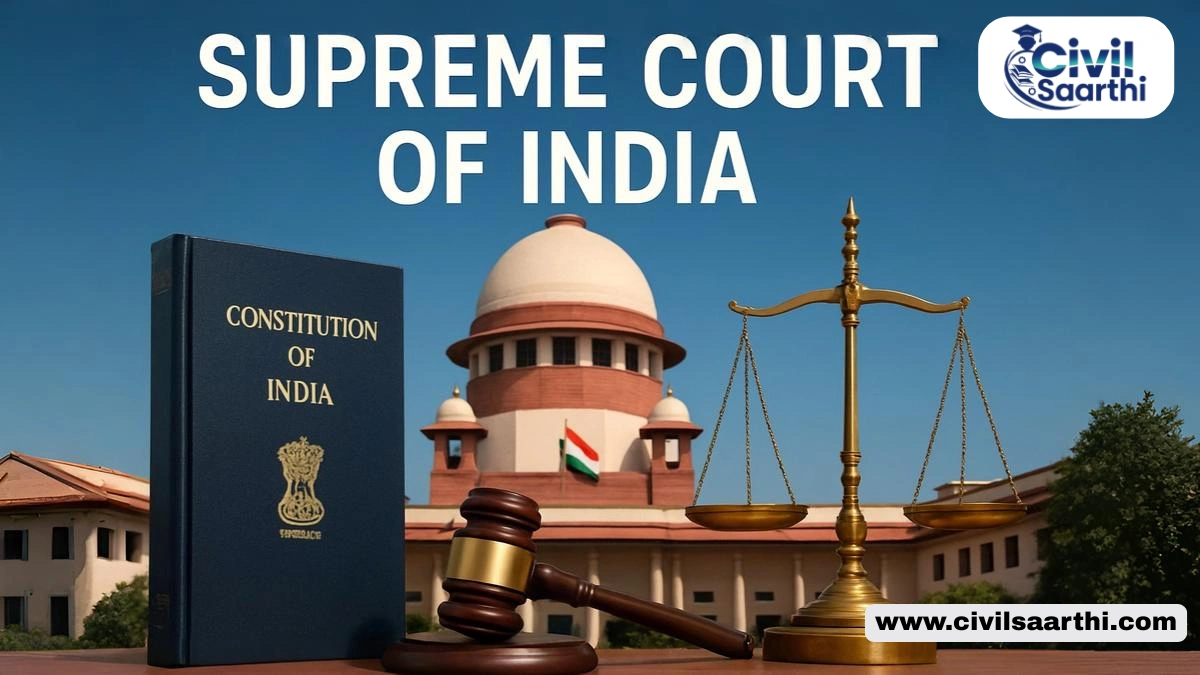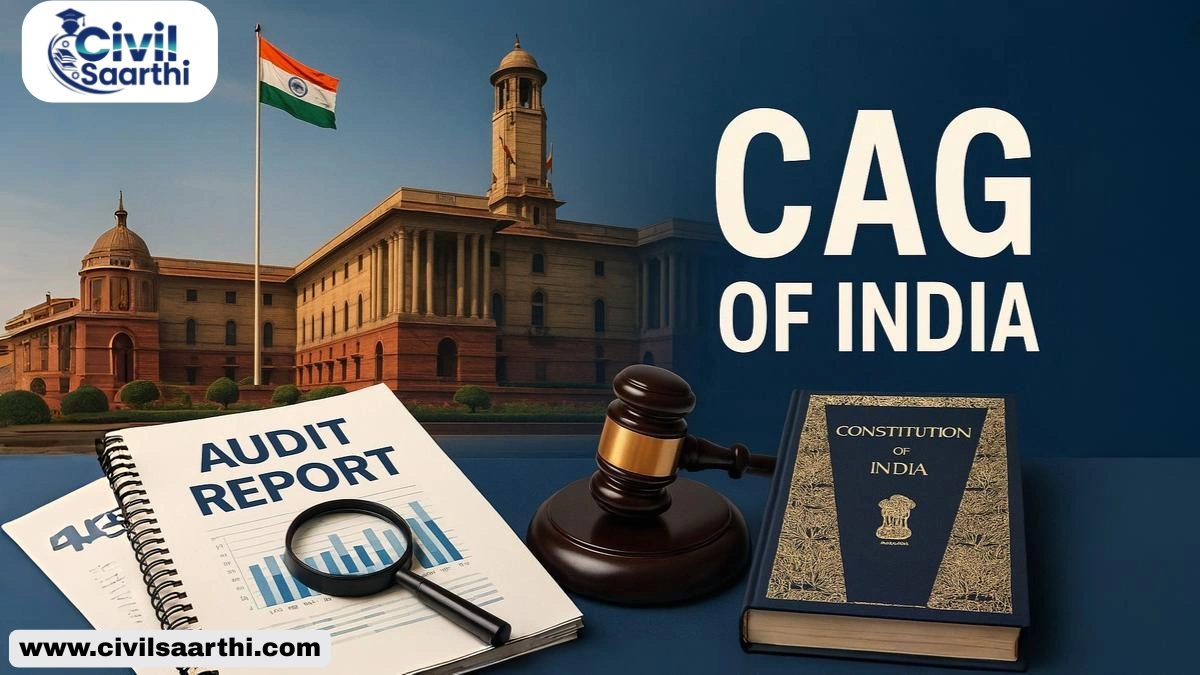The Fifth and Sixth Schedules of the Indian Constitution are special constitutional provisions aimed at safeguarding the interests, culture, and governance rights of India’s tribal communities. They were designed to ensure that tribal areas receive decentralized administration, socio-economic development, and protection of their traditional practices and land rights. For UPSC aspirants, understanding these schedules is crucial to grasp the concept of tribal governance and constitutional mechanisms for inclusive development.
Introduction to Fifth and Sixth Schedules
The framers of the Constitution recognized that India’s tribal communities had unique socio-cultural and historical experiences. To protect their identity and promote self-governance, two separate frameworks were introduced, the Fifth Schedule for Scheduled Areas in mainland India, and the Sixth Schedule for Tribal Areas in the Northeastern states.
Both schedules reflect India’s federal and pluralist spirit, allowing different levels of autonomy and legislative powers to tribal regions.
Constitutional Status of Fifth and Sixth Schedules
Both the Fifth and Sixth Schedules derive their authority from Part X of the Indian Constitution, which deals with the “Scheduled and Tribal Areas.”
Articles 244(1) and 244(2) explicitly empower these schedules.
Article 244(1) applies the Fifth Schedule to Scheduled Areas and Scheduled Tribes in states other than those in the Northeast.
Article 244(2) applies the Sixth Schedule to Tribal Areas in the states of Assam, Meghalaya, Tripura, and Mizoram.
The Fifth Schedule covers provisions related to the administration and control of Scheduled Areas and Tribes in mainland India, while the Sixth Schedule grants greater autonomy to Tribal Areas in the Northeast through Autonomous District Councils (ADCs).
The Fifth Schedule – Administration of Scheduled Areas
The Fifth Schedule of the Indian Constitution focuses on the administration and control of Scheduled Areas and Scheduled Tribes in 10 states of India. It ensures that tribal regions are governed according to their customs, traditions, and special needs.
Under this schedule, the Governor plays a pivotal role. The Governor has the authority to declare, modify, or revoke Scheduled Areas in consultation with the President. A Tribes Advisory Council (TAC) must also be constituted in each state having Scheduled Areas to advise on welfare and development issues concerning tribal populations.
Key Features of the Fifth Schedule
Governor’s Role: The Governor can notify or alter Scheduled Areas and has the power to make rules for their governance.
Tribes Advisory Council (TAC): Each state with Scheduled Areas must have a TAC consisting mostly of Scheduled Tribe representatives.
Presidential Control: The President can direct that particular laws shall or shall not apply to Scheduled Areas.
Autonomy in Governance: Local laws can be modified or suspended to protect tribal customs and interests.
Special Legal Protection: Provisions under this schedule override general laws when required for tribal welfare.
States Under the Fifth Schedule
The Fifth Schedule currently applies to states such as Andhra Pradesh, Chhattisgarh, Gujarat, Himachal Pradesh, Jharkhand, Madhya Pradesh, Maharashtra, Odisha, Rajasthan, and Telangana.
In these states, tribal-majority areas are declared as Scheduled Areas, and the governance framework is designed to ensure that development projects, land laws, and administrative decisions respect tribal traditions. Mechanisms such as the Panchayats (Extension to Scheduled Areas) Act, 1996 (PESA) further strengthen grassroots democracy in these regions.
The Sixth Schedule – Governance of Tribal Areas in the Northeast
The Sixth Schedule provides a more advanced model of autonomy for the Tribal Areas of the Northeastern states. It covers the states of Assam, Meghalaya, Tripura, and Mizoram, where tribal populations have historically demanded greater self-governance.
This schedule establishes Autonomous District Councils (ADCs) and Regional Councils, which function as mini-legislatures. These councils can make laws on land, forests, water, agriculture, village administration, and social customs. The aim is to empower local tribal institutions while maintaining the unity of the Indian Union.
Salient Features of the Sixth Schedule
Autonomous District Councils: These councils have legislative, executive, and judicial powers over specified subjects like land use, forest management, and customary laws.
Judicial Authority: Traditional courts and local councils can adjudicate disputes according to tribal customs.
Governor’s Powers: The Governor can create, modify, or dissolve districts and has the final authority in disputes.
Financial Autonomy: Councils can levy taxes, manage budgets, and undertake developmental works.
Cultural Safeguards: The schedule preserves distinct tribal traditions, languages, and administrative systems.
Comparative Analysis – Fifth vs. Sixth Schedule
Although both schedules aim to protect tribal interests, they differ in structure, extent of autonomy, and geographical focus. The Fifth Schedule applies to mainland India, focusing on administrative safeguards through the Governor and TAC, whereas the Sixth Schedule applies to northeastern states, granting greater legislative and executive autonomy through elected councils.
Major Differences:
The Fifth Schedule gives limited autonomy under the Governor’s supervision, while the Sixth Schedule provides legislative powers to local councils.
The Fifth Schedule covers ten states, whereas the Sixth Schedule applies to only four northeastern states.
In the Fifth Schedule, the President and Governor hold decision-making powers; in the Sixth, Autonomous District Councils directly exercise governance functions.
The Sixth Schedule allows tribal areas to enact their own laws on land, customs, and local administration, while such flexibility is restricted under the Fifth Schedule.
Importance of the Fifth and Sixth Schedules in Indian Polity
The Fifth and Sixth Schedules are critical for ensuring justice and inclusion for marginalized tribal communities. They uphold the constitutional principles of equality, diversity, and decentralization, giving indigenous communities a voice in governance.
Key Significance:
Protection of Tribal Identity: Safeguards cultural and traditional practices of tribal communities.
Decentralization of Power: Enables local self-governance and autonomy in decision-making.
Socio-Economic Development: Promotes welfare schemes and infrastructure development in tribal areas.
Legal and Political Empowerment: Recognizes customary laws and provides special legislative frameworks.
Preservation of Forest and Land Rights: Ensures sustainable use of natural resources in tribal areas.
Challenges and Contemporary Relevance
Despite constitutional protections, tribal areas still face issues such as displacement, land alienation, poor implementation of laws, and conflict between traditional governance and modern administration. Strengthening the Panchayati Raj system in Scheduled Areas, effective implementation of PESA and the Forest Rights Act, and empowering Autonomous District Councils are essential for realizing the vision of inclusive growth.
In the era of rapid development and globalization, the Fifth and Sixth Schedules remain central to balancing modernization with cultural preservation and sustainable governance.
Conclusion
The Fifth and Sixth Schedules of the Indian Constitution embody India’s commitment to diversity, decentralization, and dignity for all communities. They ensure that tribal regions retain their distinct cultural identities while benefiting from the country’s democratic and developmental processes. For UPSC aspirants, these schedules represent not only constitutional mechanisms but also the moral foundation of inclusive governance in India.
UPSC Level Practice Questions
Prelims Type – Objective Questions
1. Under which Articles of the Constitution are the Fifth and Sixth Schedules mentioned?
A. Articles 330 and 332
B. Articles 244 and 275
C. Articles 275 and 371
D. Articles 244(1) and 244(2)
Answer: D. Articles 244(1) and 244(2)
2. Which of the following states are covered under the Sixth Schedule?
Assam
Tripura
Nagaland
Mizoram
Select the correct answer:
A. 1, 2, and 4
B. 1 and 3 only
C. 2 and 4 only
D. 1, 2, 3, and 4
Answer: A. 1, 2, and 4
3. The Tribes Advisory Council (TAC) is a constitutional body under which Schedule?
A. Fourth Schedule
B. Fifth Schedule
C. Sixth Schedule
D. Tenth Schedule
Answer: B. Fifth Schedule
4. Which of the following statements about Autonomous District Councils is correct?
A. They are appointed by the President of India.
B. They function under the Governor’s direct control and can legislate on specific matters.
C. They exist in all states having Scheduled Tribes.
D. They have no judicial powers.
Answer: B. They function under the Governor’s direct control and can legislate on specific matters.
5. The provisions of the Sixth Schedule can be amended by—
A. An ordinary law of Parliament
B. A Presidential order
C. A constitutional amendment under Article 368
D. A State Legislature resolution
Answer: C. A constitutional amendment under Article 368
Frequently Asked Questions (FAQs)
1. What is the difference between the Fifth and Sixth Schedules?
The Fifth Schedule applies to Scheduled Areas in mainland India, while the Sixth Schedule applies to Tribal Areas in the Northeastern states, providing greater autonomy through local councils.
2. Which states come under the Fifth Schedule?
Andhra Pradesh, Chhattisgarh, Gujarat, Himachal Pradesh, Jharkhand, Madhya Pradesh, Maharashtra, Odisha, Rajasthan, and Telangana.
3. Which states are covered under the Sixth Schedule?
The states of Assam, Meghalaya, Mizoram, and Tripura fall under the Sixth Schedule.
4. What are Autonomous District Councils (ADCs)?
ADCs are elected bodies in the Sixth Schedule areas that exercise legislative and executive powers over local governance, land, forests, and customs.
5. What is the role of the Governor?
In the Fifth Schedule, the Governor oversees Scheduled Areas and frames rules with presidential approval. In the Sixth Schedule, the Governor can modify district boundaries and supervise the functioning of councils.
6. Why are these schedules important for UPSC?
They highlight India’s approach to tribal welfare, administrative federalism, and the balance between central authority and local autonomy.
7. Can Parliament amend these schedules?
Yes. Both schedules can be amended by the Parliament through a constitutional amendment procedure.







